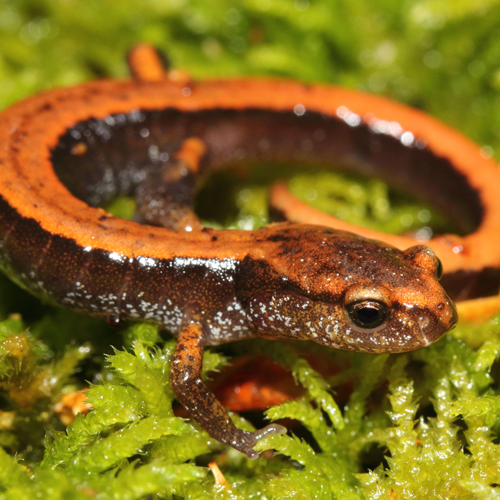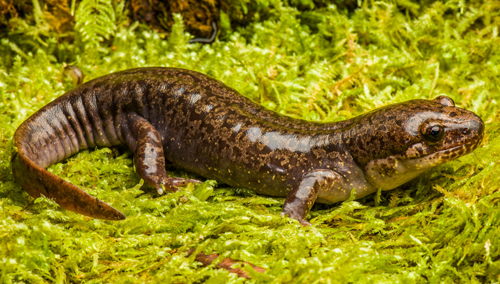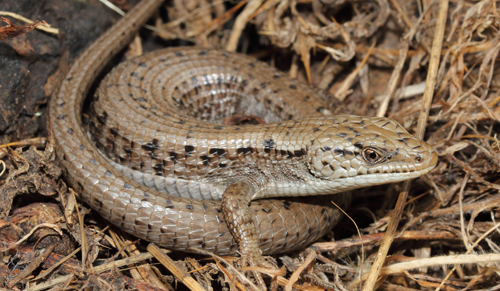Frequently Asked Questions
First and foremost, toads are frogs but not all frogs are toads. This is because frogs and toads belong to the order Anura which people often refer to as frogs. Toads refer to one family of frogs, Bufonidae, that contains over 300 species. These generalized words made sense in Great Britain where there are very few species of frog and toad, however that is not the case in B.C. where there are diverse families of Anurans. Frogs and toads are amphibians and there are several ways to tell them apart. Generally, toads have dry warty skin, while frogs have smooth or slimy skin. Toads have parotid (poison) glands behind their eyes while frogs have bulging eyes. Frogs have long webbed hind feet that help them leap and swim, while toads have short hind legs that aid them in walking. Toads typically spend more time on land further away from water sources, while frogs prefer to stay in water or relatively close to it. Frogs typically lay eggs in clusters, while most toads lay eggs in long chains.
For more information, visit:
https://wildlifepreservation.ca/what-is-the-difference-between-toads-frogs/

Credit: Eugene Beckes
Western Toad
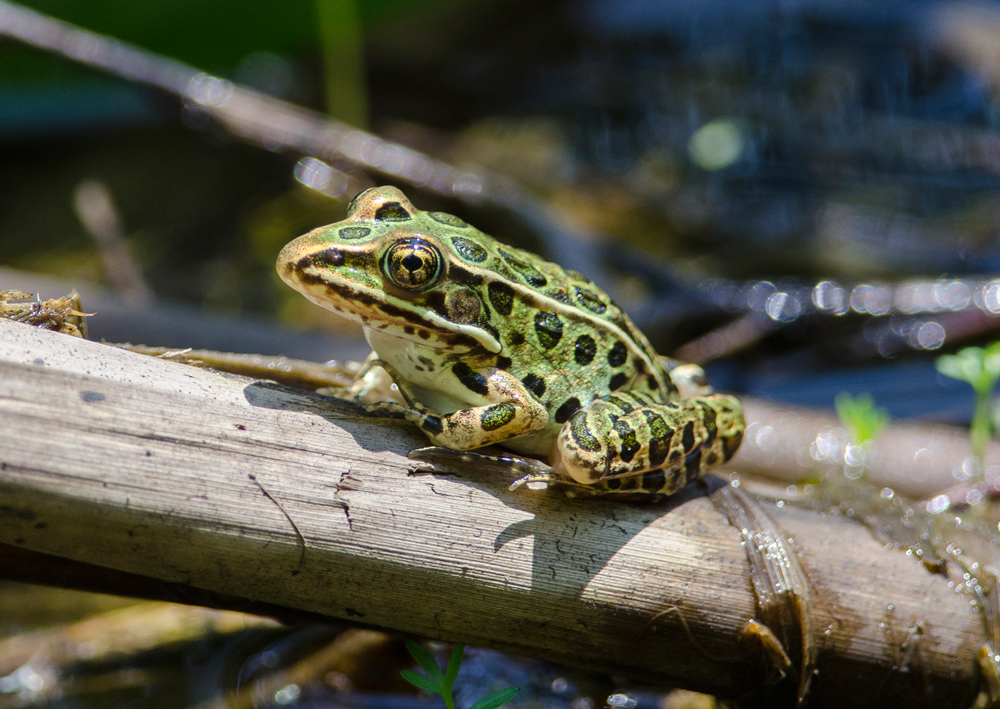
Credit: Patrick Randall
Northern Leopard Frog
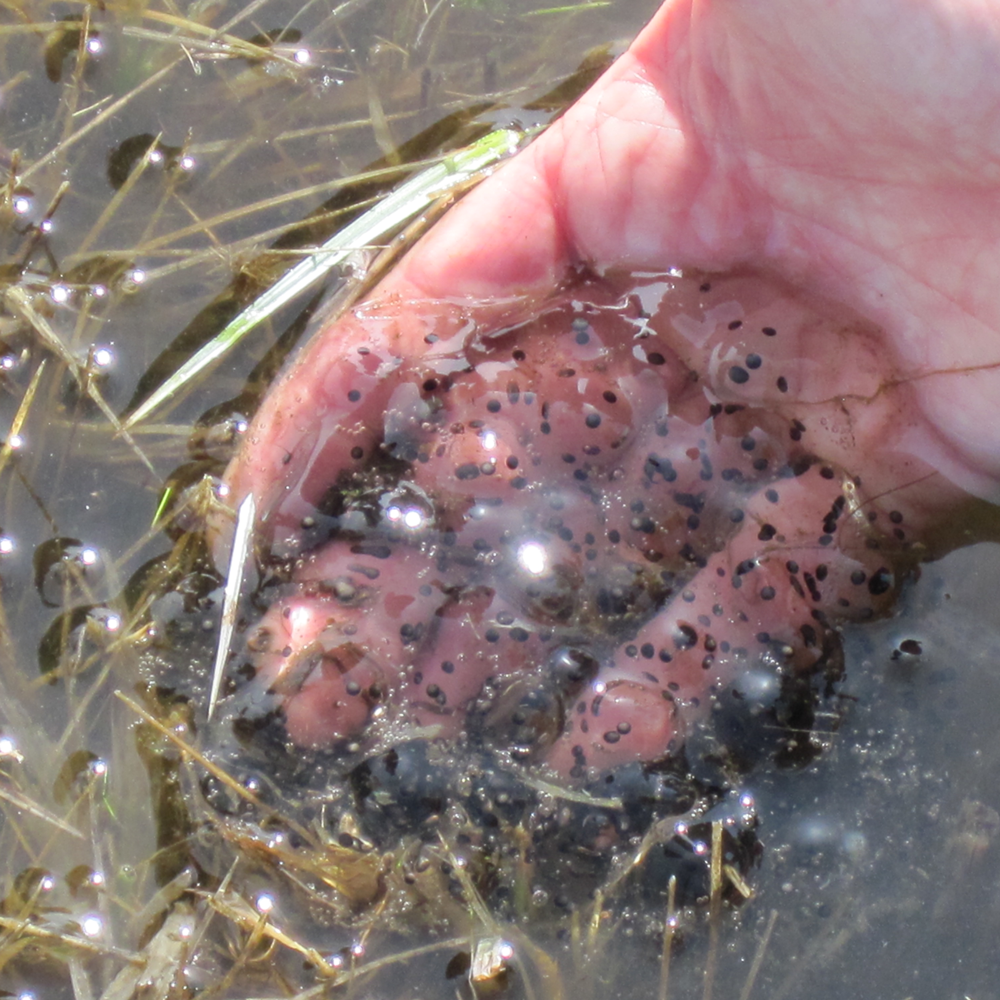
Credit: Taylor Goforth
Oregon Spotted Frog

Credit: Ian Adams
Rocky Mountain Tailed Frog

Credit: David Bradford
Bullfrog
For more information, visit: https://wildlifepreservation.ca/what-is-the-difference-between-toads-frogs/
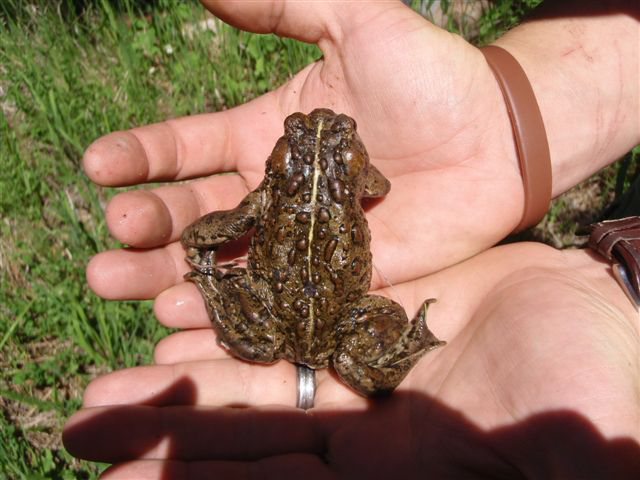
Credit: US Forest Service
Western Toad
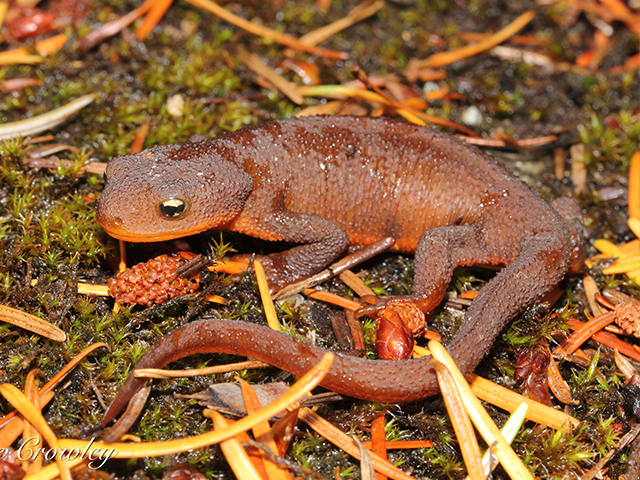
Credit: Joe Crowley
Rough-skinned Newt
For more information, visit: https://bcinvasives.ca/invasives/american-bullfrog/
https://bcreptilesandamphibians.ca/american-bullfrog/
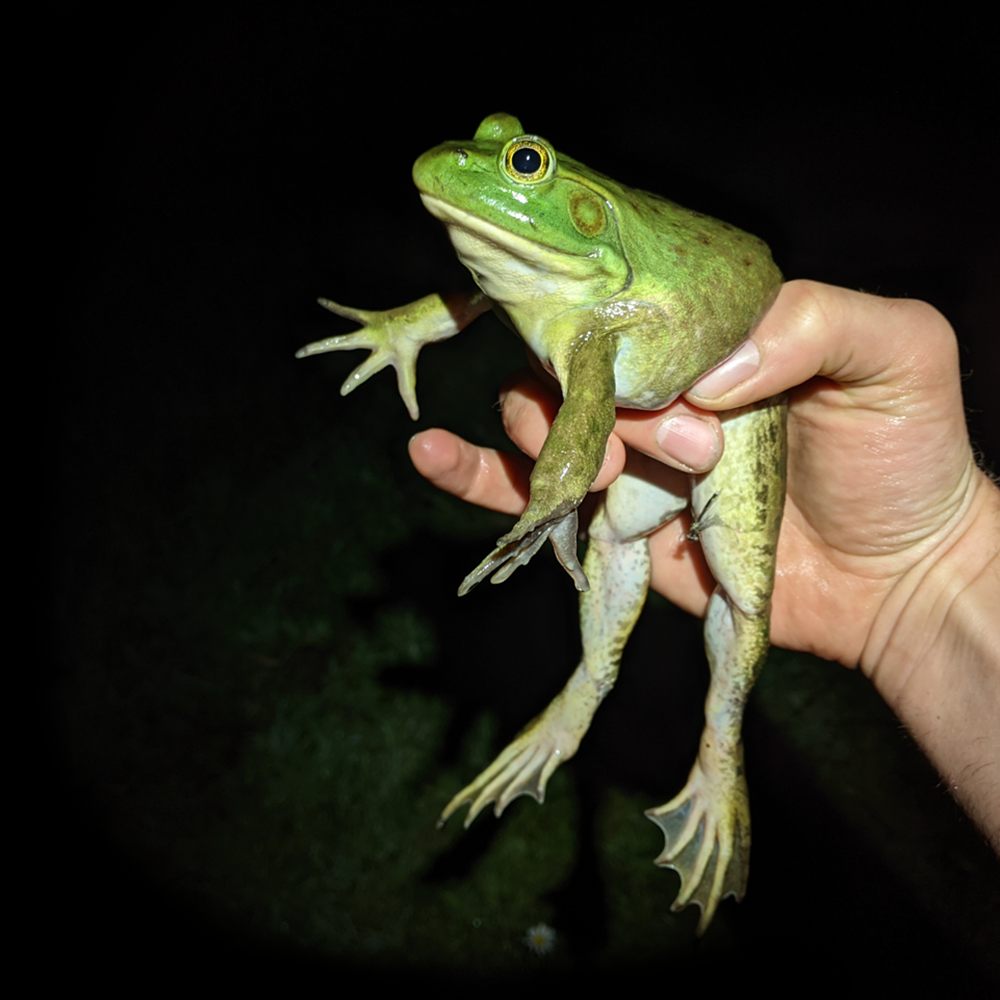
Credit: Matt Morrison

Credit: David Bradford
If you come across a Bullfrog, try to take photos and a GPS location. DO NOT capture or transport Bullfrogs-this can cause more harm than good. You can contact BC Frogwatch with your concerns and they will direct you with what to do next. Additionally, you can report any Bullfrog sightings on the Report Invasives BC mobile app compatible with Android, iPhone and iPad, or via an online form.
For more information on reporting invasive species visit:
https://www2.gov.bc.ca/gov/content/environment/plants-animals-ecosystems/invasive-species/reporting-invasive-species
For more information on reporting invasive species visit:
https://bcinvasives.ca/invasives/american-bullfrog/
https://bcreptilesandamphibians.ca/american-bullfrog/
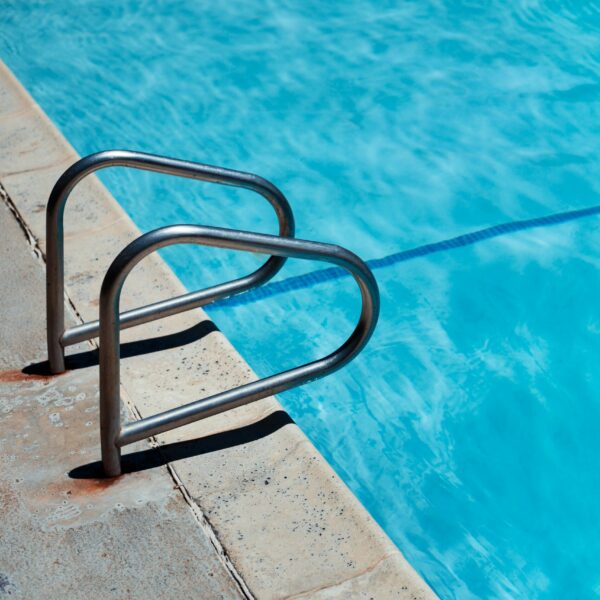
For more information:
https://cwf-fcf.org/en/about-cwf/faq/faqs/what-should-i-do-if-i-spot-a.html
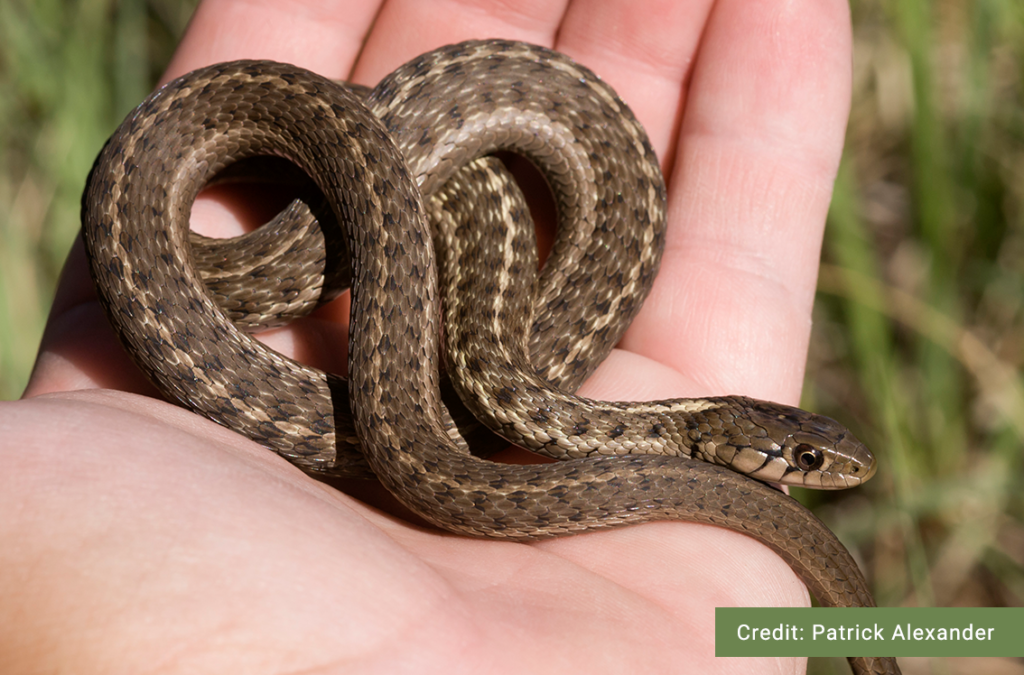
Western Terrestrial Gartersnake
For more information, visit: https://bcreptilesandamphibians.ca/rattlesnake-awareness/
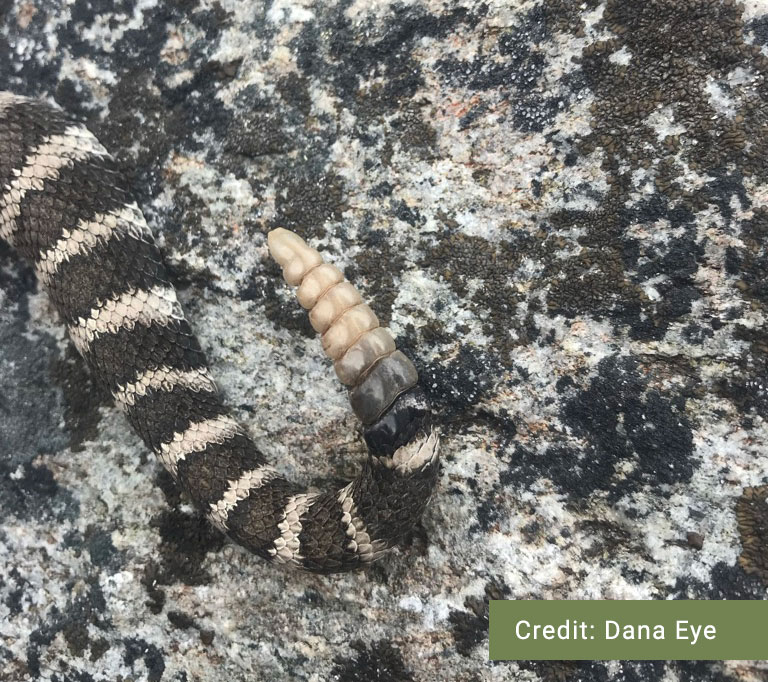
Credit: Matt Morrison
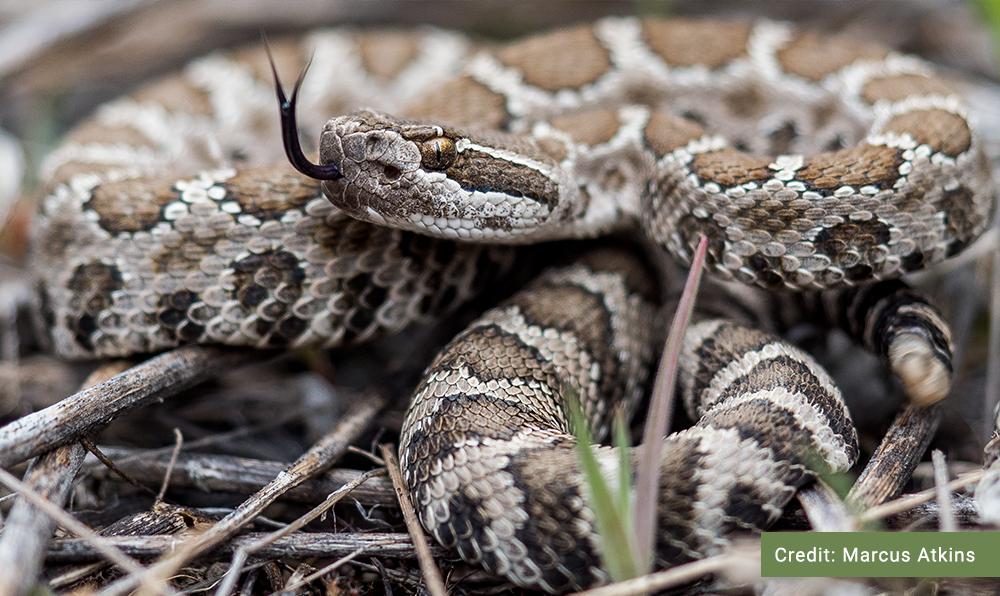
Credit: David Bradford
Safety Tips:
- Keep your hands and feet where you can see them. Avoid stepping close to logs, shrubs and boulders where snakes may be hiding.
- Wear ankle-high boots and long loose pants while walking in rattlesnake habitat.
- If you must walk through tall grass, carry a long walking stick to disturb the grass in front of you or to tap rocks and logs. This will warn snakes that you are nearby.
- Walk with a partner, this is good practice especially in areas with high wildlife activity.
- Teach children to respect snakes and to not pick them up. This will help prevent snake bites.
- Never touch a rattlesnake even if it appears to be dead. The biting reflex can remain intact even after a snake is dead.
- Stay on trails and keep your dog on leash.
- If you see or hear a snake, first stop and look all around you to check for other snakes nearby, then carefully move at least 5 meters away from the snake.
If you encounter a rattlesnake or any snake, remain calm. Rattlesnakes are more afraid of you than you are of them and will only strike as a last resort. Here are a few tips to help you during a snake encounter:
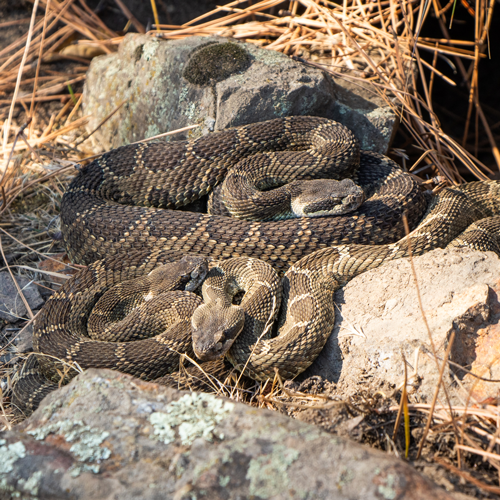
Credit: Andrew Nydam
Western Rattlesnakes coiled together
- The first thing you should do is STOP. This is to ensure you don’t accidentally step on the snake.
- Locate the snake.
- Wait for the snake to move away from you.
- If the snake does not move, move directly away from the snake and give it lots of space.
- While moving away be aware of your surroundings and watch for other snakes that may be nearby.
For more information, visit: https://bcreptilesandamphibians.ca/rattlesnake-awareness/
ALWAYS
- Locate the snake (and potentially others) and move at least five meters away from it.
- Remove restricting clothing immediately (i.e. watches, rings, tight clothing, shoes).
- Carefully get the victim to the hospital. Call 9-1-1 as soon as possible, so the hospital can prepare for treatment of a rattlesnake bite. If you are alone: remain calm, avoid strenuous activity, call 9-1-1 and try to find help.
- Monitor the swelling around the bite. Every 15-20 minutes circle the reddened/swollen area and write the time beside the circle
NEVER
- Never apply a tourniquet. It can cause more harm to the victim.
- Never suck out the venom, cut the wound or use a “snake bite kit”.
- The victim should never drive themselves to the hospital, if you are alone call 9-1-1 and be transported via ambulance.
- Never bring the snake that bit you to the hospital.
For more information, visit: https://bcreptilesandamphibians.ca/rattlesnake-awareness/
Red-eared Sliders are an invasive species in B.C. They can be distinguished from our native species, the Western Painted Turtle, by their yellow belly and a red streak behind their eye. Red-eared Sliders have been introduced to B.C. by pet-owners abandoning them in our lakes and ponds. Unfortunately, when pet-owners purchase Red-eared Sliders, they do not realize how long they can live (sometimes up to 20-30 years!) and often abandon them when they decide they cannot offer life-long care.
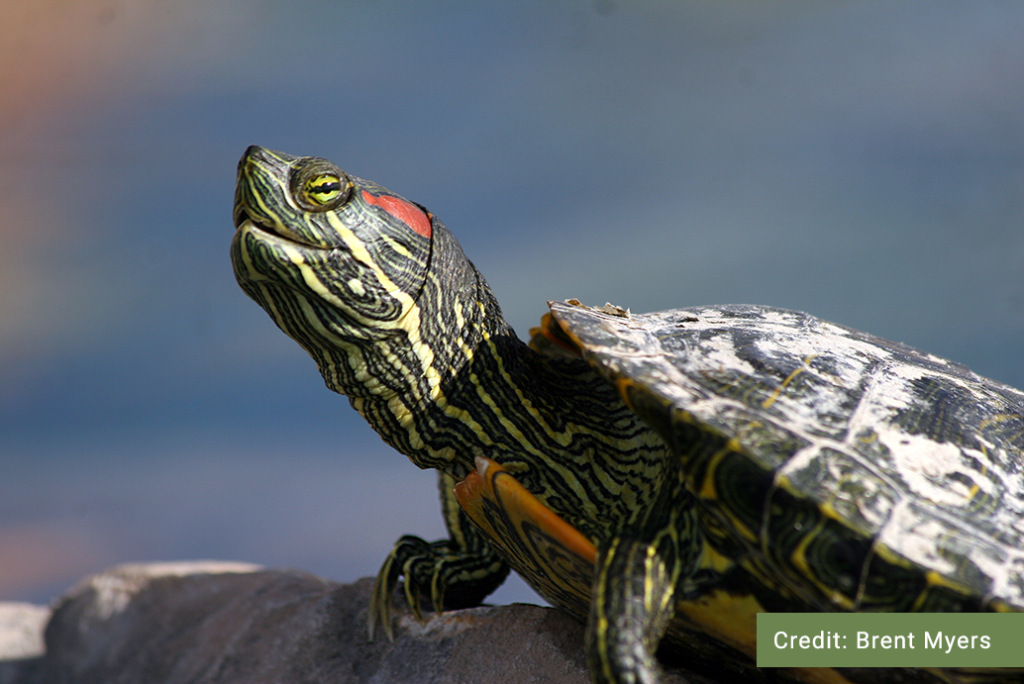
Red-eared Slider
For more information on reporting invasive species visit: https://www2.gov.bc.ca/gov/content/environment/plants-animals-ecosystems/invasive-species/reporting-invasive-species
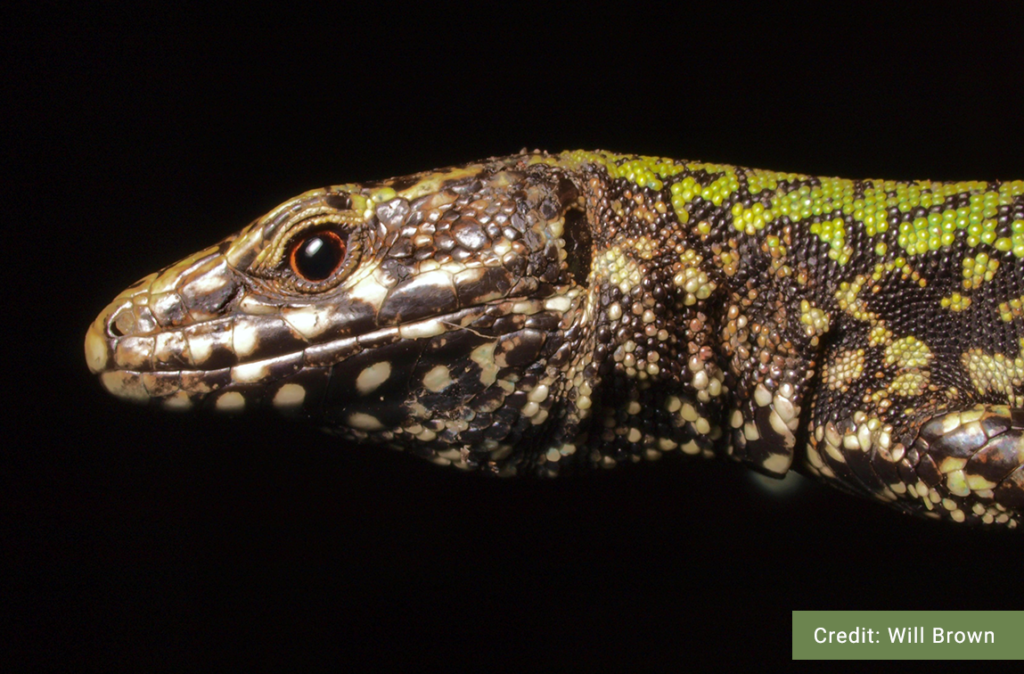
European Wall Lizard
You can report any sightings on the Report Invasives BC mobile app compatible with Android, iPhone and iPad, or via an online form.
For more information on reporting invasive species visit:
https://www2.gov.bc.ca/gov/content/environment/plants-animals-ecosystems/invasive-species/reporting-invasive-species
Alternatively, you can report any sightings on iNaturalist or Seek
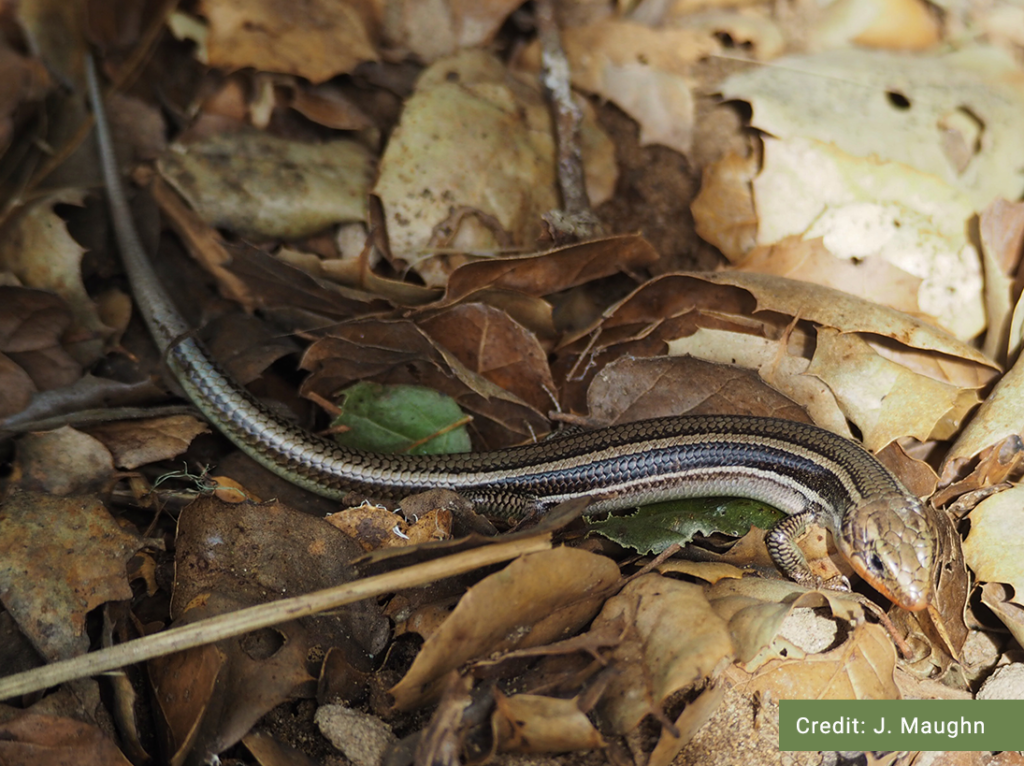
Western Skink
For more information, visit:
https://spca.bc.ca/programs-services/leaders-in-our-field/position-statements/position-statement-on-cat-welfare/
https://spca.bc.ca/news/stray-feral-cats/
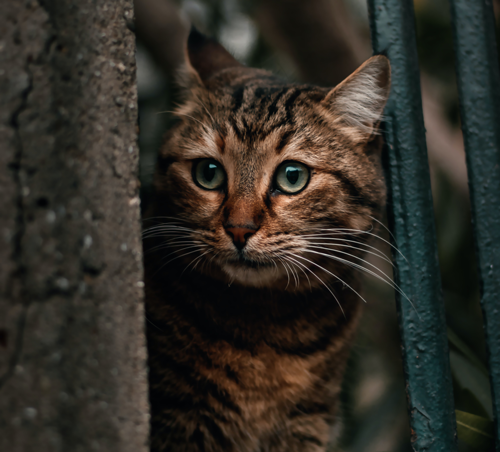
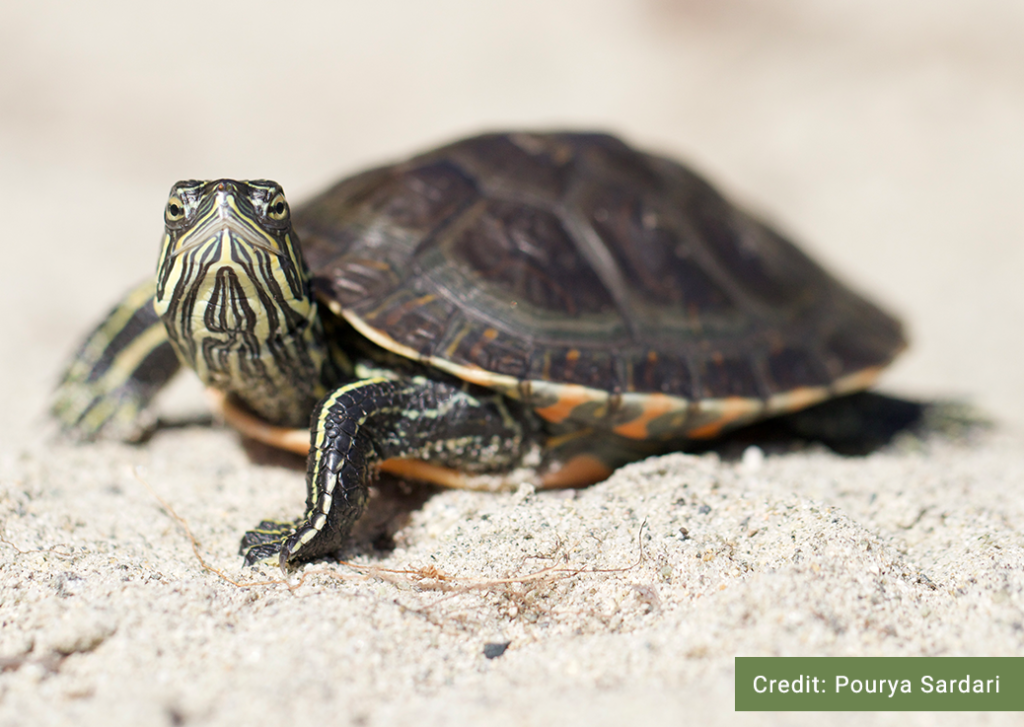
Western Painted Turtle
https://inaturalist.ca/projects/canadian-amphibians-reptiles-on-roads
Videos on how to move a turtle across the road:
https://www.youtube.com/watch?v=F4aPiN-kGYA
https://ontarionature.org/how-you-can-help-turtles-cross-the-road/
Here are some tips if you encounter a turtle on the road:
- It is important to remember to only help a turtle cross the road if it is safe to do so.
- If you see a turtle in the middle of the road while driving, first pull over safely and put your hazards on.
- Be sure to watch for oncoming vehicles in both directions and move the turtle by gently placing one hand on its shell and one hand on its belly (or grasp it on the sides of it shell with both your hands).
- Carry it low across the road to avoid injury if it falls from your grasp. Always move the turtle in the direction it was going and a few meters from the road. – If you are afraid of handling a turtle, try to use a stick or car mat to gently encourage it to move off the road.
- Never transport a turtle to an area you think it is supposed to be versus where you found it, as relocation can be detrimental to them.
If you notice a turtle on the road that has a cracked shell or injuries to its head or limbs, you may want to take it to a nearest animal shelter or wildlife rehabilitation centre. Place the turtle in a container with aeration and a lid in a dark place until you can transport it, or a volunteer can come and retrieve it. If you see a turtle dead on a road, carefully take a picture and a location to report it to local authorities. Move the dead turtle off the road to avoid other wildlife being injured while scavenging.

Leatherback Sea Turtle laying eggs
https://ontarionature.org/faq-about-turtle-nests-blog/
If you see a nest alongside a road, do not disturb the nest and keep your distance. You can report it to B.C. Frogwatch here or you can submit an incidental sighting report here. If you have a turtle nest in your yard or in an area that is under construction, report it to your local wildlife branch. Never dig up and move nests or attempt to incubate them at home, egg collection and transfer requires permits from the provincial government. Caring for turtle eggs is an extremely challenging task and is best only attempted by professional biologists and researchers.
If you are concerned for turtles and want to make a difference, moving turtles off of roads can be very helpful to their survival. Be sure to always move them in the direction they were moving and only move a turtle if it is safe to do so.
For more information, visit:
https://www2.gov.bc.ca/gov/content/environment/plants-animals-ecosystems/invasive-species/reporting-invasive-species
https://cwf-fcf.org/en/resources/downloads/booklets-handouts/CWF-Fishing-hooks-and-turtles_BC.pdf
Here’s some ways you can help amphibians and reptiles:
- Drive slowly and carefully and avoid driving at night or during a rainstorm.
- Help wildlife off the road by carefully moving them in the direction they were going. Be sure to only do this if it is safe and be sure to wear a safety vest, put your hazards on and carefully cross the road.
- Avoid using pesticides, rodenticides and road salts that are harmful to amphibians and reptiles.
- Practice reptile and amphibian friendly gardening and landscaping: Download PDF
- Keep harmful materials such as fine mesh up off the ground to avoid wildlife getting entangled.
- Avoid releasing pets into the environment such as Red-Eared Sliders, lizards, snakes.
- Do not transport or collect wildlife including all life stages (eggs, tadpoles, adults, juveniles)
- Consult with local government and biologists before beginning a construction project to help avoid sensitive areas and to sweep for reptiles and amphibians to reduce mortality.
- Report incidental sightings to iNaturalist
- Report invasive species
- Report roadkill or “hotspot” areas where wildlife seem to be killed frequently
- Get involved in local conservation projects
- Become a land steward: http://conservancy.bc.ca/get-involved/protect-your-land/stewardship-on-your-property/

Credit: Andrew DuBois
Boreal Chorus Frog
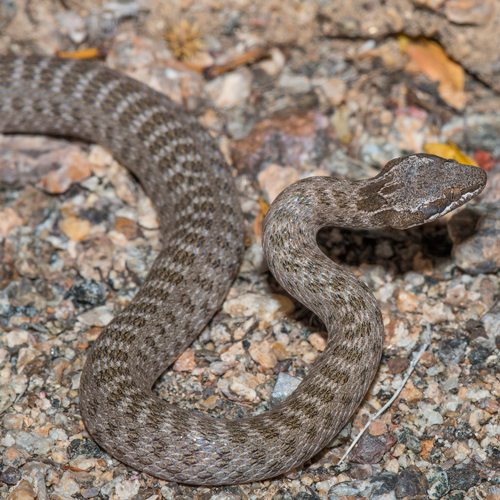
Credit: Mike Cardwell
Desert Nightsnake
